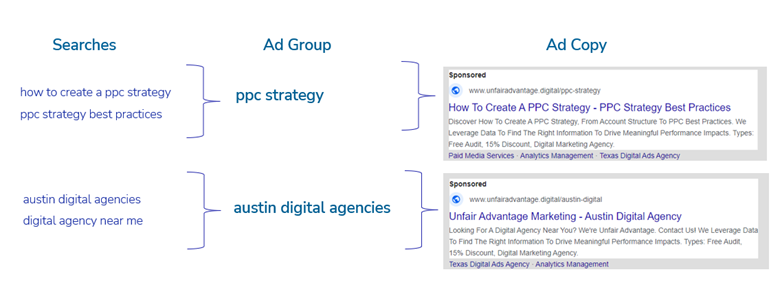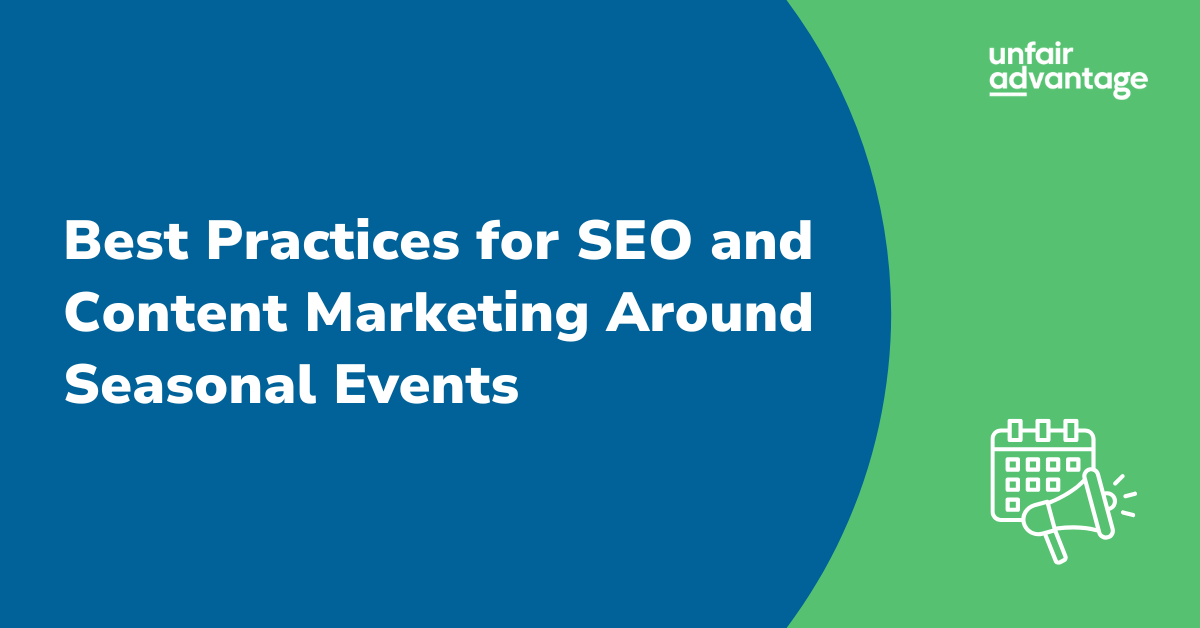
Published in:
Blog
Why Paid Media Account Structure is So Important
Do you remember the last ad you clicked on?
In a world of unlimited choices, only the most relevant ad earns your click. We as marketing professionals pour so much time and effort into our creative, only for users to pass us by in a sea of options. We know we have what users are looking for, but if they aren’t clicking on our ads, how are we going to drive conversions and generate revenue? Further, how will we gather data that will allow us to improve our ads without insights into their performance?
There’s a plethora of data available on which to base adjustments and make decisions in digital media- there are 8.5 billion Google searches per day, 15% of which are unique. To give our ads the best chance to stand out from the noise, it’s important we start with the basics.

 How the correct account structure creates a seamless user experience:
How the correct account structure creates a seamless user experience: As you can see, the ad copy above is reflective of what the user searches, which signals to them that we can provide a solution to their problem, increasing the likelihood that they will click on our ad.
As you can see, the ad copy above is reflective of what the user searches, which signals to them that we can provide a solution to their problem, increasing the likelihood that they will click on our ad.
The Google Ads Account Structure Framework
Let’s start with an overview of the way your Google paid media account is set up.- Account: This is where your business information such as billing, user permissions, and more are kept.
- Campaign: Campaigns live in your Google Ads account and are how you will advertise your business solutions or offers throughout the Google network. Your campaigns are where your ad groups are housed.
- Ad Group: Inside of your campaigns are your ad groups. Your ad groups are where keywords that you want to target with relevant ads will be housed.
- Keyword: Keywords are found within your ad groups, and they determine how your ads will be displayed. When someone searches for something on Google that is relevant to your keywords, Google will display your ad. The best practice is to have 1 to 20 tightly themed keywords within each ad group.
- Ads:This is the text copy or other creative (image, graphic, video, etc) that Google will display when the keywords you are targeting are relevant to a search query. It is good practice to have two to three ads per ad group to test for optimization.
- Landing Page:When someone clicks on your ad this is the page that Google will send them to. Each ad group can only have one landing page. The best practice is to align your landing page to the search query intent.
Other Important Terms
Search Query: word or phrase a user types into search box. Ad Rank: value used to determine where ads are shown on a page relative to other ads. Ad rank = quality score * bidWhy is Google Ads Account Structure Important?
Google wants to provide users the best possible experience, which means that Google wants to show a user the most relevant ad possible. The better aligned your ads are to a search query, the higher the likelihood of it appearing and getting clicks: clicks that generate revenue for Google (since you pay per click) and you (because a click is a predecessor to a conversion). Your ad relevance is highly impacted by your account structure. How you organize your campaigns, ad groups, keywords, ads, and landing pages will help Google understand themes in your account. This makes it easy to serve your ads to the right audience and customize ads to better reflect the audience’s search queries.How Does Account Structure Impact User Experience?
Below is an example of what can happen if we structure our account incorrectly. With only one campaign and ad group, a plethora of search queries result in an ad that is likely not relevant to the respective query. When a searcher’s inquiry results in an ad that doesn’t seem relevant to their query, it creates friction in the user’s mind which is less likely to result in a click.
 How the correct account structure creates a seamless user experience:
How the correct account structure creates a seamless user experience: As you can see, the ad copy above is reflective of what the user searches, which signals to them that we can provide a solution to their problem, increasing the likelihood that they will click on our ad.
As you can see, the ad copy above is reflective of what the user searches, which signals to them that we can provide a solution to their problem, increasing the likelihood that they will click on our ad.

